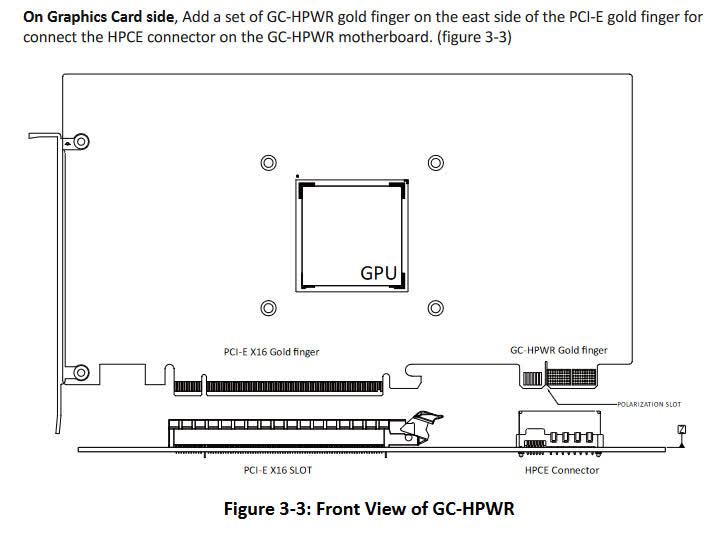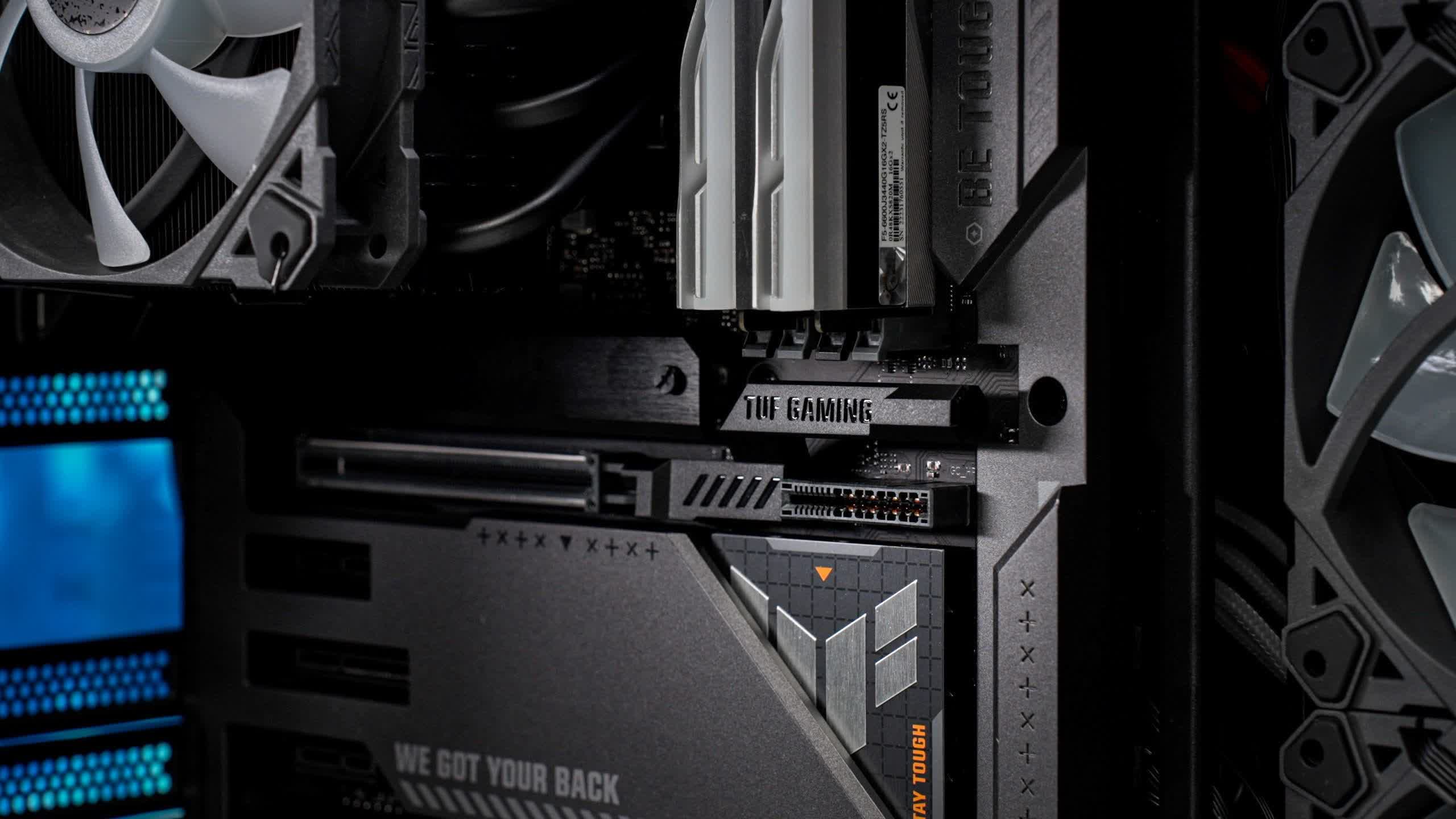Why it matters: After a recent safety scare concerning RTX 4090 power cables, some hardware companies plan to test methods to circumvent them entirely. Asus offered an early look at a new GPU connection standard in May, and a recently leaked patent sheet provides a closer look at the technology's design goals.
Trusted leaker Momono has posted a spec sheet for installing graphics cards without power cables. The design involves a new port on the motherboard that works similarly to the primary PCIe x16 slot. The papers detail a dock called the HPCE connector, which sits next to and is directly aligned with the PCIe x16 port. Compatible GPUs would include a new corresponding GC-HPWR gold finger next to the PCIe x16 gold finger.

When Asus demonstrated a GeForce RTX 4070 utilizing the new system at Computex and the Bilibili World 2023 exhibition, observers reported that it could deliver up to 600W. That wattage is enough for the flagship 4090 at stock settings, but overclocking and future high-end GPUs could exceed 600W. However, designers appear to have revised that spec to deliver no less than 600W to meet the demands of high-end graphics cards, with no upper limit stated.
Another requirement is that the dock doesn't take up too much space, which is one reason the chosen design is based on one used for server components and known for compactness. Using mature technology also ensures reliability, lowering the chances of a repeat of Nvidia's 12VHPWR controversy.
HPCE connector pic.twitter.com/3RBTUhcQsg
– 188å· (@momomo_us) August 28, 2023
Last year, users began reporting cases of frying and melting connectors for the RTX 4090's 12VHPWR cables. The issue eventually led to a class-action lawsuit against Nvidia. While the company claimed it detected only a few dozen incidents, which it blamed on user error, other analyses alleged structural problems. The PCI-SIG later introduced an updated power connector design, which Nvidia quietly implemented. The HPCE port presents an entirely new solution that isn't vulnerable to bending.
Asus's cableless RTX 4070 should be available later this year or early 2024. However, it is unclear whether it will include an option for traditional connectors, which would provide customers with more flexibility as they switch between motherboards that may or may not feature HPCE ports.
